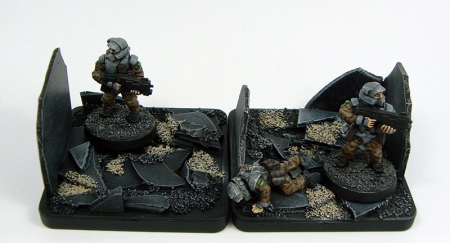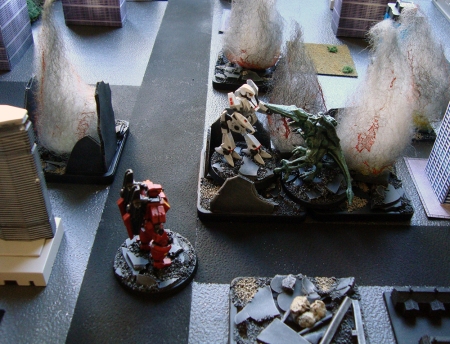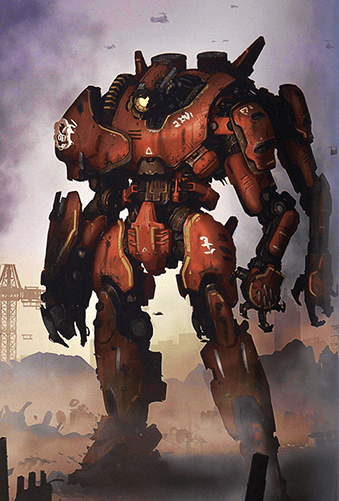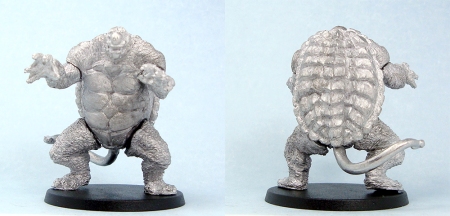During the summer holidays, I mostly worked on a new(ish) side project – undead pirates. Having painted a bunch of crewmen, that I’m sure to post at some point during the next few years, I realized that obviously my crew needs a ship. None of the offerings on the market really struck a chord though, as they were a little too over the top for me. Cool as ships built of huge bones are, I was more in search of a traditional Flying Dutchman look, or something resembling the Black Pearl from Pirates of the Caribbean. In other words, a pretty regular ship, but tattered, like a zombie of a ship. In fact, the search for such a ship still continues!
During my search, I came across something that I had eyed in the past, a wonderfully crazy model of a small ship carried on back of a huge monstrous crab, produced by Print Your Monsters. The model is pretty much a definition of “over the top”, but who cares, I wanted it! I bought the STL files for it, printed it out and got to work.
Now, in all honesty, resin 3d prints are shit challenging in terms of multi-part kits. Resin printing can be surprisingly inaccurate, which leads to all sorts of alignment issues and so on. Very much so with this pretty complex kit as well. Out came some Green Putty though, and I had a decent looking completed model. There’s still a small visible gap that I missed, but on a model like this, I don’t mind all that much. I decided to save resin and printed the base on my FDM printer, using thinned down putty to mostly eliminate visible layer lines on the rocks.
Painting a large model like this is pretty daunting. It’s a centrepiece, so has to look pretty nice, but on the other hand there’s a ton of stuff to paint. The undead theme helped here! I’ve painted my zombies and the like pretty weathered, dark, and muted, so went for it here as well. I settled on a dark green and fleshy purple combination, and I think it works pretty well! The underside of the crab, not really all that visible, has a nasty, pale, pink-white look. The model was very much a drybrush/Contrast paint/wash affair, cutting down on time and resulting in exactly the look I wanted. It also helped hide some rough putty work!
The model was bedecked with skulls, which posed a narrative challenge: were these actual skulls or decorations? I settled for painting the skulls on the ship a weathered bronze colour, while the skulls on the shell I painted as bone. They pop nicely, making the model more interesting. The crab’s limbs have a lot of flat coral, which I painted in muted yellows and reds, giving them very pale edges as I think that’s a very recognizable look!
For the base, I went with my usual look for my nautical undead, black decorative sand with tea leaves and pizza seasoning. As it’s a large base, in addition to the sculpted-on detail I added some shipwreck-y planks and barrel halves from Renedra, and a brass model ship cannon barrel that I had kicking about. I had stuck a metal pin on the highest rock to support the model – otherwise only connected to the base by the small tips of the legs – and mostly hid that with some suitably underwater looking vegetation. As with my other undead, the idea here is of a kind of otherworldly sea bottom that they carry with them. Of course the black bases also provide a striking contrast with the bright sandy bases of my pirates and civilians, and are generic enough.
The banner was the thing I finished last. I sort of wanted some sort of cool pirate flag design on it, but after a single try, I realized that my freehand skills were not up to it. On a straight hanging flag maybe, but with the folds and the flag billowing to one side…nope. I decided to go for a simple black flag, which I think looks menacing enough.
The monstrous ship actually only has space for four miniatures, but I don’t really mind. Rather than a proper ship, this is more a command vessel, likely for an undead pirate lord going “MWHAHAHAHAHAA!” While I’d love to show it off in full, the model is a nightmare to photograph, but hopefully the pictures at least give an idea of it – I hope to post some more in the future! I posed a Black Scorpion skeleton pirate and some Pariah Miniatures zombies on the model for a bit of added fun.
With this thing finally finished, I want something a lot less work-intensive. While it’s fun to do a big piece every now and then, I’m in no rush to start the next one!




























